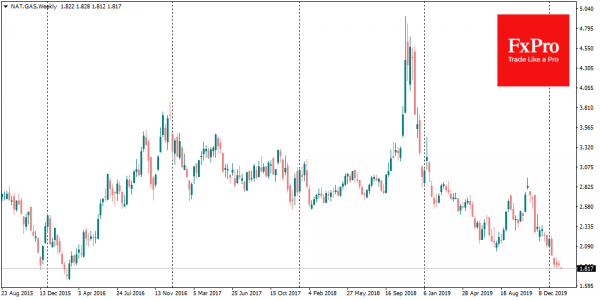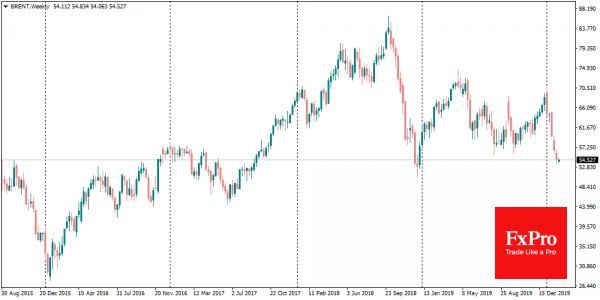Concerns about the influence of the Chinese coronavirus returned to the markets at the end of last week. The focus was on forecasts of a slowdown in China’s economy and in the global economy as a whole due to restrictions on movement in China and long vacations on factories in some Chinese provinces, which damaged the established supply chains around the world.
Particularly worrisome is the news of a 60 per cent drop in rail traffic in China during the holidays, as well as a decline in air travel. All this leads to fears of lower demand for energy.
The impact of coronavirus can be considered as the short-term factor for markets, as plants in China are already returning to work. But for Gas, two longer-term trends remain valid.
The cost of Gas broke through the “bottom” of January at the beginning of trading on Monday, declining below $1.83 MMBtu on the New York Mercantile Exchange. The quotes were below only during the three weeks at the start of 2016, when Brent had fallen below $30, almost twice below its current quotes.
OPEC, led by Saudi Arabia, regularly tries to save oil prices from falling. But the gas market, untouched by this strategy, had failed to avoid a historic slump, as an unusually warm winter in Europe also suppressed demand for Nat Gas. The recent cooling is unlikely to change consumption dramatically in the coming months.
An even longer-term factor is US expansion in the energy market. In recent years, the U.S. has not only become the world leader in oil production but also increased Natural Gas production. Now the Administration of the US president is actively working on forming markets for these commodities as trade negotiations with the EU and China almost invariably include demands to increase oil and LNG imports. Besides, the Americans are throwing sand in the wheels of large-scale energy projects in Russia, such as Nord Stream-2, and before that – to Turkish Stream.
Since 2016, Russia adhered to Saudi Arabia’s strategy of cutting supply to maintain Crude prices. However, the meeting last week showed cracks between these frenemies. The roads of Russia and OPEC would diverge as the former refused to ratify further oil quota cuts by 600 BPD.
Changing a course in Russia may be a signal to the entire energy market. Russia may be switching from fighting for the prices to battle for market share. The country has room for manoeuvre, as the average cost of oil production in Russia is lower than in the US, and long-term gas supply contracts can survive a severe drop in spot prices.
All this sounds like an alarming forecast for oil and gas prices in the near term. It may well turn out that Oil and Natural Gas prices are still searching for their bottom with the most adjacent oil and gas targets 10% below the current quotations. Further decline may bring Gas prices back to their lows of the 2016 and Oil to its lowest at the end of 2018. However, this is unlikely to be the end of the battle for the market. Worryingly, it may be just the beginning of a period of extreme volatility in the energy market.














